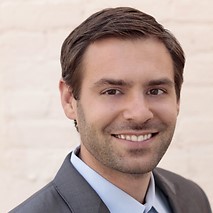Population Research Discovery Seminars

Disaster Maps and a Survey Comparison of Displaced Populations in the Cyclone Fani Region 6 Months after Landfall
Zack Almquist, Research Scientist, Demography and Survey Sciences Group, Facebook
10/18/2019
12:30-1:30 PM PT
In the wake of a disaster, Facebook Disaster Maps share real-time information with response teams, helping them determine things like whether communities have access to power and cellular networks, if they have evacuated, and what services and supplies they need most. Disaster Maps use statistical techniques to maintain individuals’ privacy. For example, we only share de-identified information and also add up data points in a given area (called a map ‘cell’ or a ’tile’) to prevent re-identification. If there are only a few individuals in an area, we also smooth populations across tiles, meaning that we average the number of people in a given area with nearby areas, making it even harder to re-identify anyone. Disaster Maps can be generated within 24 hours of a natural disaster — much faster than comparable tools— and update daily as the situation on the ground unfolds. This allows agencies to respond to changing circumstances in evacuations, connectivity, or supply needs (https://dataforgood.fb.com/tools/disaster-maps/). To improve and validate these maps we have surveyed disaster affected populations of the Cyclone Fani region to obtain self reports of disaster related displacement and return information.
Zack Almquist is a Research Scientist in the Demography and Survey Sciences group at Facebook. From 2013-2018 he was an Assistant Professor of Sociology and Statistics at the University of Minnesota. In 2017-2018 he was a Visiting Scholar at the Graduate School of Education at Stanford University. Almquist’s research interests include social network analysis, big data, computational social sciences, mathematical sociology, spatial analysis, demography, sociology of education, environmental policy, public health, and human judgment and decision-making. His main research focus is on understanding, modeling, and predicting the effects that space (geography) and time have on human interaction (e.g., communication, friendship, mentorship, needle sharing, etc.) and social processes (e.g., information passing, knowledge acquisition, skill development, disease transmission, etc.).